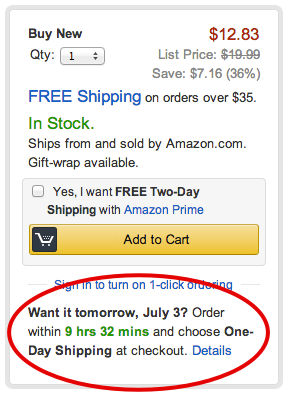
How to Win Big with Top-Notch Sales Closing Techniques
 Updated on
Updated on
By Ringy
Table of Contents
Table of Contents
Ask any sales rep, and they'll tell you that closing a sale is the hardest part.
The most frustrating part of sales is spending days, weeks, or even months with a client only to have them drop out at the last minute.
Suddenly, all that work is done, gone, down the drain. That seriously affects sales motivation.
Obviously, the point is to avoid that scenario at all costs. And the way to do that is to embrace tried, tested, and proven sales closing techniques that have the best chance of landing you that elusive sale.
Let's get straight into it!
Common Sales Closing Techniques
Salespeople know that there's a process to making a sale, and the close is the most important part of the entire process. After all, it's the last step. The ending. The big finish.
But we all know that closing the sale takes time and effort—you can't just start a sale with a customer and move as quickly as possible. Doing so can come across as arrogant and pushy and show the customer that you don't care about doing the work to really understand their needs.
These days, more customers are looking for that personalized sales experience, meaning salespeople have to ensure they are listening, observing, and understanding their customers completely.
It makes sense then that traditional sales closing techniques, often developed with the idea of using psychological tricks to make or break the sale, are often seen as pushier than modern techniques, which tend to require the essential step of understanding the customer before they can be used.
However, when used correctly, traditional closing sales techniques can still be successfully used, even today.
So we're left with two schools of thought when it comes to sales closing techniques — traditional and modern. Let's take a look at each in more detail. But first, here's a summary.
|
Technique Type |
Examples |
Description |
|
Traditional |
Assumptive Close, Summary Close, Objection Close |
Direct approaches that guide the conversation towards a close. |
|
Modern |
Needs Close, Consultative Close, Collaborative Close |
Focuses on building trust and ensuring the solution aligns with the customer's needs. |
Traditional Sales Closing Techniques
Here are some of the most common traditional sales closing techniques:
The Urgency Close
The urgency close technique focuses primarily on putting pressure on the customer to make a decision as quickly as possible. This sales closing technique is really only effective when you've taken the time to identify the customer's pain points and needs and have presented a solution.
Basically, you've given them a short deadline within which they have to make a decision. Typically, a salesperson will offer a special deal or limited-time offer to give the customer a bit of a push.
Here are two strong examples:
- Amazon

Image text: Want it tomorrow, July 3? Order within 9 hrs 32 mins and choose One-Day Shipping at Checkout.
In this example, Amazon uses the "I want it now" urgency technique to sell their faster shipping option.
- Old Navy

Image text: today only! In-Store and Online, 10/8. 50% off All Dynamic Fleece. Excludes Maternity. While supplies last.
Old Navy uses a hefty product discount alongside a limited-time offer to entice customers to buy immediately.
Summary Close
The summary close is used by salespeople to reiterate the products that the customer has potentially chosen to purchase while highlighting the value of those products. It's another way to guide the customer towards purchase by reminding them of how that product is going to benefit them.
Here's an example:
"So you've chosen to go with Ringy for your CRM system. With that, you're getting unlimited users, free world-class customer support, and automation features that will increase the productivity of your business. Would you like me to put that through for you?"
Sharp Angle Close
This closing sales technique is interesting because it relies on the customer asking for a price reduction or to include extra services. The salesperson can turn the tables a little bit by offering what the customer is looking for, but also putting a twist on it by saying something like "I'll do that for you, but you have to buy today" to secure the sale.
Here's an example:
When the customer asks you, "Can you give me a discount off the monthly subscription price? I've been a customer of yours for years" you can say, "Sure, but you'll need to agree to the marketing add-on".
This give-and-take generally catches the customer off guard, as you agreed to their request without a fuss, but attached a condition to it. This example works really well if you've already established that the customer would really benefit from the extra add-on or service, but they've declined it earlier.
The Assumptive Close
This technique is fairly simple in that the salesperson uses a phrase or language to assume that the deal is done.
Here's an example:
"Let's set a time for when we can deliver your new fridge."
It's important to remember that using this closing technique too early in the sale or to the wrong type of customer can actually lose you the sale, as it can come across as too pushy very easily. Take the time to make sure your customer is still on board with the sale and is happy with moving forward before using this technique.
Modern Sales Closing Techniques
While traditional sales closing techniques are still relevant, we've since moved to more modern techniques that focus less on psychological trickery and more on making sure that the customer is nurtured through each stage of the buying process equally, rather than focusing on the close as the most important moment.
Here's an analysis of several common modern sales closing techniques:
Do your research
Clients appreciate sales reps that know their stuff, and that includes doing research on the client themselves to better understand their needs. If you can demonstrate that you understand your client's business and industry, it shows the client that you care and you've done your homework. This helps you build much-needed rapport with your client.
Always be closing
A mistake that sales reps often make is to turn on the closing sales technique near the end of the sale. In reality, you should always be focusing on closing, and steering the conversation in that direction.
For instance, you can focus on making small closing wins throughout the sales process, such as the customer agreeing to meet with you, or agreeing to add on a certain feature if they decide to buy. Actions like these plant the seed of the sale in the customer's mind, giving you the ability to let it grow as the sales process continues.
Suggestive close
The suggestive close allows you to show your customer that you've been listening to them, and have a complete understanding of their pain points and needs.
For example, once your customer has finished explaining their challenges, you could say something like:
"Thanks for explaining that to me. I can see how that would result in a difficult situation. We actually offer this great service that would handle that for you."
Option close
Who doesn't love options? One easy way to close a sale is to offer your customer the choice between two or three products or services that would meet their needs.
All you have to do is say something like, "Would you like to go with A, B, or C?"
The customer is left with having to choose between those options, all of which result in the sale.
Key Criteria for Making Sales Techniques Work

Sales are finicky. You can have a rock-solid sales strategy, excellent sales reps, and a tried and tested sales process in place, and still feel like something is missing, like you haven't quite perfected your sales secret sauce recipe.
No matter how much you over-prepare to deliver the best sales experience to your customers, if you're missing key ingredients that amplify your sales techniques, you'll be left with a bland, tasteless final result.
You need to ensure that you communicate value, build trust, create urgency, and stay organized throughout every sale.
Let's take a closer look at how that works in a sales environment:
1. Communicate Value
Communicating value is the most important and best way to reach your customers and convince them to buy. While it's easy to say, communicating value effectively can be hard to execute.
Consider that sales reps often deal with hundreds of customers. Learning about each customer's unique business and industry, coupled with trying to understand each customer's wants, needs, and pain points, can prove to be a difficult experience.
In addition, most customers have trouble articulating their struggles in a clear and concise way, making it even harder for a sales rep to position a product or service as a solution.
That's why a clear value message needs to be established from the beginning. This value proposition helps guide both your customers and sales reps as to how your company's solution is the answer to customers' problems while highlighting the unique offerings you bring to the table.
A great value proposition focuses on the difference between what you offer versus your competitors, showcasing the distinct solution your product or service provides.
2. Build Trust
Building trust is another extremely important aspect of sales. If your customer doesn't trust what you're saying, they are not going to buy. It's that simple.
Among the best ways to build trust with your customers are using storytelling and emotional intelligence to convey your understanding of their challenges, and demonstrate how you can solve them.
For example, after listening to a customer describe their pain points, a salesperson can draw from previous experiences and describe how they helped another customer in a similar situation. If there isn't a relevant previous customer example, metaphors and analogies are other great ways to illustrate a solution.
Emotional intelligence focuses more on the salesperson putting themselves in the customer's shoes to really understand the customer's challenges.
This perspective change helps the salesperson really double down and focus on the customer's needs by asking themselves questions like the following:
- What are the customer's biggest pain points and challenges?
- Does the product or service offered help to solve the customer's challenges?
- What are the risks involved if the customer goes forward with the sale, or doesn't go forward with the sale?
3. Create Urgency
From limited-time offers, discounts, and sales, businesses use urgency every single day to help move sales forward.
Urgency can be a great way for salespeople to let their customers know that they are willing to go the extra mile to make the sale. It can also be a way to build trust, especially if the salesperson manages to create a special deal that is only available to a certain customer.
However, the urgency closing sales technique should also be used with caution. If discounts and sales become the norm for a company, customers are sure to take notice, creating the exact opposite effect of urgency. Customers could learn that if they just wait a little while, whatever product or service they want to purchase will surely go on sale.
4. Stay Organized
If a sales rep is disorganized, the sale can fall flat really quickly. Not being prepared with key talking points from previous discussions for meetings, or forgetting the customer's main challenges can give the customer the impression that they are not important enough to the sales rep.
Using a sales CRM like Ringy helps sales reps stay organized and keep track of previous conversations and sales activity with customers so they are always ready for customer meetings and conversations.
Best Practices for Effective Sales Closing
Throughout the entire sales process, from initial contact to final close, certain practices can significantly increase your success rate. Here's a breakdown of key areas to focus on:
1. Building Rapport and Trust Throughout the Sales Process
Rapport is the foundation of a strong sales relationship. By establishing trust and rapport, you create a comfortable space for open communication and a genuine desire to find solutions. Here's how to cultivate rapport:
|
Strategy |
Description |
|
Find Common Ground |
Look for shared interests, experiences, or backgrounds to connect with the prospect on a personal level. |
|
Practice Active Listening |
Pay close attention to what the customer is saying, both verbally and nonverbally. Ask clarifying questions to demonstrate understanding. |
|
Maintain a Friendly and Positive Demeanor |
Smile, make eye contact, and use a professional yet approachable tone. |
|
Be Genuinely Interested in Their Needs |
Focus on understanding their challenges and goals rather than just making a sale. |
2. Active Listening to Understand Customer Needs and Objections
Active listening is crucial for uncovering a prospect's true needs and concerns. It allows you to tailor your pitch and effectively address objections during the closing stages. Here's how active listening works:
- Focus on the customer: Minimize interruptions and give the prospect your undivided attention.
- Pay attention to nonverbal cues: Body language and facial expressions can reveal unspoken concerns.
- Ask open-ended questions: Encourage elaboration and gain a deeper understanding of their situation.
- Summarize and clarify: Briefly repeat back key points to ensure mutual understanding.
3. Addressing Objections Proactively and Effectively
Objections are a natural part of the sales process and can be an opportunity to clarify the value you offer. Here's how to address them effectively:
|
Strategy |
Description |
|
Anticipate common objections |
Prepare responses to frequently encountered concerns beforehand. |
|
Acknowledge their concerns |
Validate their perspective and show you understand their hesitation. |
|
Clarify the objection |
Ask clarifying questions to pinpoint the root cause of the concern. |
|
Respond with value-based solutions |
Present solutions that directly address their specific concerns and demonstrate the product or service's benefits. |
|
Offer social proof |
Share testimonials, case studies, or data that address their specific objection. |
4. Using Persuasive Language and Communication Techniques
The way you communicate your message can significantly impact your closing success. Here are some persuasive language techniques to consider:
- Focus on benefits, not features: Explain how your product or service will solve their problems and improve their situation.
- Use strong action verbs: Create a sense of urgency and motivate them to take action.
- Highlight positive emotions: Focus on the positive outcomes they'll achieve by using your solution.
- Tell compelling stories: Share stories that illustrate the value proposition and resonate with the customer's needs.
- Present a clear call to action: Don't leave them guessing. Clearly articulate the next step you want them to take.
Common Challenges in Sales Closing
Even the most experienced salespeople face challenges during the closing stages. Here's a breakdown of some common hurdles and how to navigate them:
Fear of Rejection or Failure
One of the most common challenges in sales closing is the fear of rejection or failure. Sales professionals often hesitate to close a sale due to the potential for rejection, which can negatively impact their confidence.
Overcoming this fear involves building resilience and understanding that rejection is a natural part of the sales process. Training and experience can help in developing a positive mindset, enabling salespeople to approach each closing opportunity with confidence.
Uncertainty About Timing and When to Close
Knowing the right time to close a sale can be challenging. Closing too early may result in an unfinished discussion, while waiting too long might cause the prospect to lose interest.
Successful sales techniques include recognizing buying signals and gauging customer readiness. This involves active listening and reading non-verbal cues to determine the optimal moment for closing the deal. By mastering these techniques, sales professionals can increase their closing success rates.
Handling Objections and Resistance From Customers
Handling objections and resistance is a crucial part of the sales closing process. Customers often raise concerns or express doubts that need to be addressed proactively. Effective sales closing techniques involve preparing for common objections and responding with relevant information and solutions.
By demonstrating empathy and providing convincing evidence, sales professionals can turn resistance into agreement and move towards closing the sale.
Dealing with Indecisive or Skeptical Prospects
Indecisive or skeptical prospects pose a significant challenge in sales closing. These prospects may hesitate to decide due to uncertainty or lack of trust. Utilizing modern sales techniques such as building rapport and providing clear, detailed information can help in alleviating their concerns.
Additionally, offering testimonials and case studies can build credibility and encourage prospects to commit to the purchase.
Overcoming Personal Biases or Limiting Beliefs
Personal biases and limiting beliefs can hinder the effectiveness of sales professionals. These internal challenges may cause salespeople to underestimate their prospects or second-guess their strategies.
Recognizing and addressing these biases is essential for successful sales closing. Continuous learning, self-reflection, and mentorship can help sales professionals overcome these obstacles and approach each sale with an open mind and a positive attitude.
Overcoming Sales Closing Challenges
Closing deals consistently requires resilience and the ability to navigate challenges. Here are some strategies to overcome common obstacles and become a more successful closer:
Developing Resilience and Persistence in Sales
Developing resilience and persistence is essential for overcoming sales closing challenges. Sales professionals often face multiple rejections before achieving success. Building resilience involves maintaining a positive attitude, staying motivated, and continuously striving to improve. Persistence in sales means consistently following up with prospects and not getting discouraged by setbacks. By cultivating these qualities, salespeople can better handle rejection and keep pushing toward closing sales.
Learning From Failures and Adapting Closing Techniques
Learning from failures is a critical component of refining sales closing techniques. Each unsuccessful attempt offers valuable insights into what can be improved. Sales professionals should analyze their failures to identify patterns and areas for improvement.
This might involve adjusting their approach, enhancing their communication skills, or fine-tuning their pitch. By adapting their techniques based on past experiences, salespeople can become more effective in closing sales.
Seeking Feedback and Guidance From Mentors or Sales Coaches
Mentorship and coaching can provide invaluable support in overcoming closing challenges. Here's how to leverage these resources:
- Connect with a mentor: Seek guidance from an experienced salesperson who can offer insights and feedback on your closing techniques.
- Invest in sales coaching: Consider professional coaching to gain personalized instruction and practice opportunities.
Practicing Role-Playing Exercises to Improve Closing Skills
Practicing role-playing exercises is an effective way to improve sales closing skills. Role-playing allows sales professionals to simulate real-life sales scenarios and practice their techniques in a controlled environment. This helps in building confidence, refining their sales pitch, and developing quick responses to objections.
Incorporating various closing sales techniques during these exercises can prepare salespeople for different situations they may encounter, ultimately leading to more successful closures.
Leveraging Technology and Sales Tools to Streamline the Closing Process
Leveraging technology and sales tools can streamline and improve the sales closing process. Modern sales techniques involve using CRM systems, automated follow-up tools, and data analytics to manage leads and track progress.
These tools provide valuable insights into customer behavior, help personalize communication, and automate routine tasks, allowing sales professionals to focus more on closing deals. By integrating technology into their workflow, salespeople can enhance their productivity and improve their closing rates.
Conclusion
Sales isn't an easy industry, but it can have great rewards if you're good at it. While customers should be nurtured throughout the sales process, the close is like the final act in a play or the last penalty kick in a football game: if you mess it up, it can ruin the entire performance or cost you the game.
That's why it's so important to arm yourself with effective sales closing techniques: when you prepare yourself effectively to nail every stage of the sales process, you're giving yourself the best chance of winning the sale.
Having the correct tools at the ready also makes a huge difference with sales success. A sales CRM like Ringy is an essential tool to help you keep track of customers, manage your sales pipeline, make sales calls, and more.
Request a demo with Ringy today and see what we have to offer.

Skyrocket your sales with the CRM that does it all.
Calling? Check. SMS? Check. Automation and AI? Check. Effortlessly keep in touch with your customers and boost your revenue without limits.

Take your sales to new heights with Ringy.
Sales in a slump? Ringy gives you the tools and flexibility you need to capture leads, engage with them, and turn them into customers.
Subscribe to Our Blog
Enter your email to get the latest updates sent straight to your inbox!
Categories
Related Articles



































































































